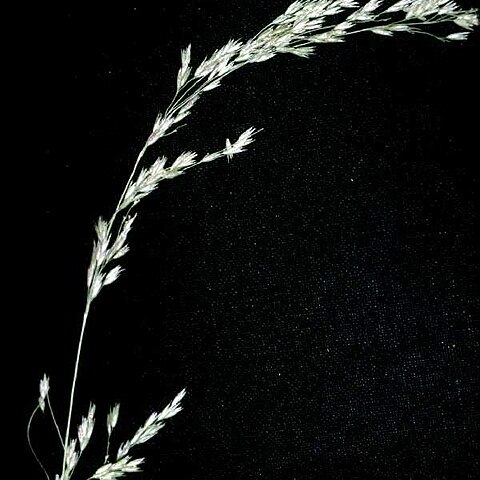Much like no. 1 [Cinna arundinacea L.]; nodes usually 3-7; lvs to 15 mm wide; ligules colorless or nearly so; infl lax and open, with slender, divaricate or recurved branches, pale green and somewhat shining; first glume 2.3-3.8 (avg 3) mm; second glume 1-veined, 2.6-4.1 (avg 3.3) mm, nearly glabrous except on the keel, the scarious margins constituting half the total width; awn to 1.5 mm; 2n=28. Moist woods; circumboreal, s. to Pa., n. Ill., Minn., and Calif., and in the mts. to N.C.
A grass. It can have one stalk or a cluster. It grows 0.6-1.6 m tall. The stalk is 2-3 mm across. The leaves are narrow and 15-30 cm long by 10-15 mm wide. The flower panicle droops. It is 15-40 cm long. The seeds are 2 mm long.

